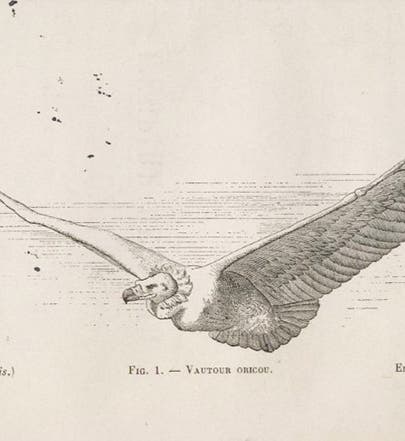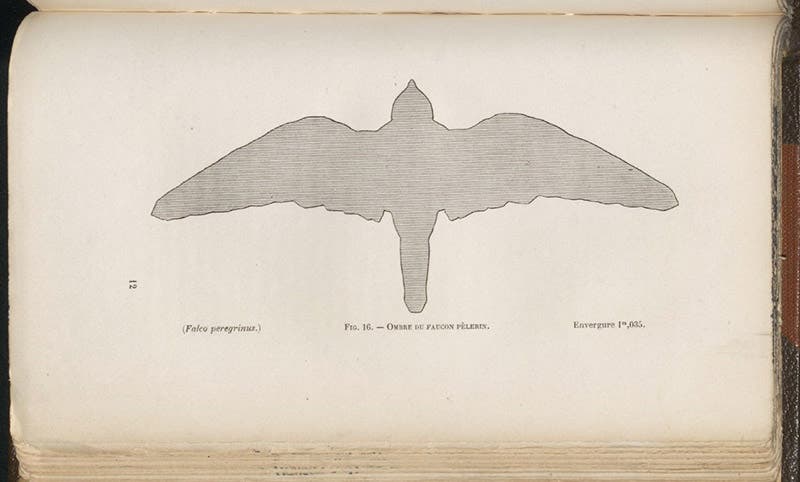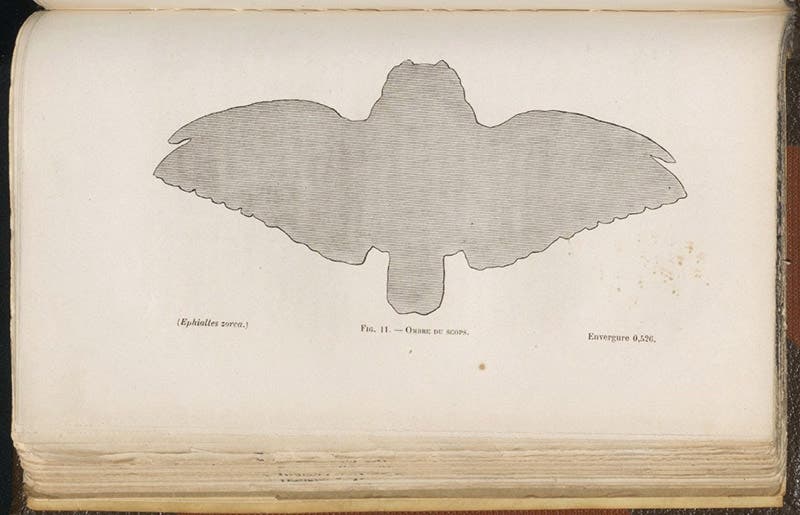Scientist of the Day - Louis Mouillard
Louis Pierre Mouillard, a French student of birds and bird flight, was born Sep. 30, 1834. Mouillard spent much of his life in Algeria and Egypt, where he taught drawing for a living. In Egypt, he observed the soaring birds of the Nile delta, especially vultures, drew them, and speculated about the secret of birds' ability to fly. He also argued to anyone who would listen that if birds could fly, humans certainly could also. Wilbur Wright called Mouillard one of the "greatest missionaries of the flying cause."
IN 1881, Mouillard published a book on bird flight, called L'Empire de l'Air, in which he continued his advocacy for human flight based on the gliding abilities of vultures. He was passionate and eloquent in his cause, and his book came to the attention of Octave Chanute and the Wright Brothers. Wilbur Wright called the book "one of the most remarkable pieces of aeronautical literature that has even been published.” Notice the tiny word “Oser!” in the center of the titlepage, which means “Dare!”
We have a copy of Empire of the Air in our Library, and the most striking feature to the casual reader are the many silhouettes of soaring birds that Mouillard drew and included in his book. We illustrate this post with some of those drawings. Mouillard's favorite soaring bird, the oricou vulture, received double treatment, a silhouette, and a full life drawing, which serves as the book's frontispiece (first image). It is interesting to me (if historically irrelevant) how much some of the silhouettes resemble various fighter aircraft that have been developed over the years.
So Mouillard was an enthusiastic advocate for human flight imitating the flight of birds. But that is really all he was. His own attempts at gliding were unimpressive, and he had little knowledge of the principles of aerodynamics. He really did not make any contribution to human flight except for maintaining that it should be possible. And yet, several French groups, especially the "Aerienne League," after the successes of Otto Lilienthal and the Wright brothers, began to trumpet Mouillard as the true father of aviation, claiming that Octave Chanute stole Mouillard’s ideas and gave them to the Wright brothers, that the Wright brothers’ wing-warping was invented by Mouillard, and that Mouillard, not Lilienthal, was the true founder of gliding flight. The League managed to get a monument erected in honor of Mouillard in 1912, in Heliopolis, in greater Cairo (sixth image). It was on the occasion of the inauguration of the monument that Wilbur Wright wrote an article on Mouillard, extolling Mouillard's studies of bird flight and praising his passion, but also pointing out that the recent call for elevating Mouillard to the rank of the father of aviation was misguided and a disservice to the work of Chanute and Lilienthal (and by implication, him and his brother). You can find Wright's article in The Published Writings of Wilbur and Orville Wright (2000), ed. by Peter Jakab and Rick Young.
I might note that Mouillard advocates, like Tesla fanatics, are still among us. The Wikipedia article on Mouillard was clearly written by a descendant of a member of the “Ligue aerienne.”
Mouillard died in poverty in Cairo in 1897, relatively unknown. His monument gave him some public recognition, but the monument no longer stands in Heliopolis. It was pulled down during the Suez crisis of 1956, which saw the removal of most of Cairo’s statues and monuments to non-Egyptians. It may survive somewhere in some Cairo warehouse. I hope so. Mouillard may not have invented human flight, but he did write a lovely, eloquent book on bird flight, and he should be remembered for that.
Dr. William B. Ashworth, Jr., Consultant for the History of Science, Linda Hall Library and Associate Professor emeritus, Department of History, University of Missouri-Kansas City. Comments or corrections are welcome; please direct to ashworthw@umkc.edu.











